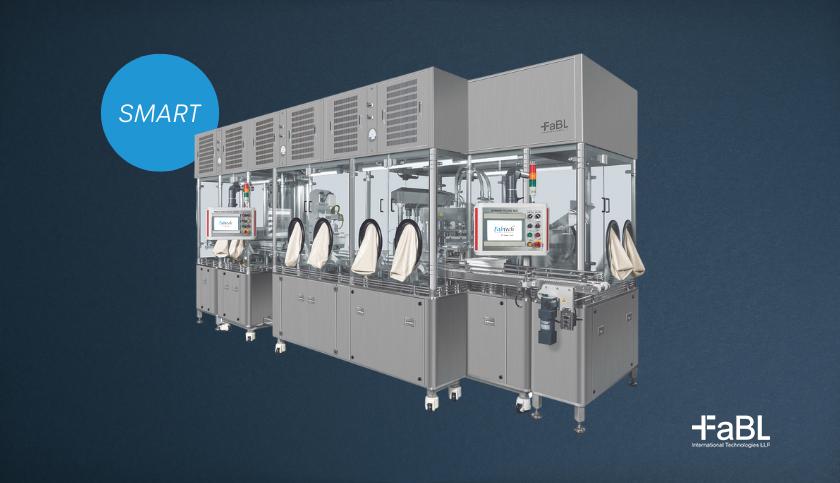I vividly remember the day when I was introduced to the world of a cleanroom. I was pretty much cognizant of the functioning and essence of a cleanroom until I was handed over a comprehensive manual that discussed each component of a cleanroom in detail. HEPA filters, Laminar Air flows, Air Showers, the list went on… with each section of the manual throwing light on several aspects that I wasn’t quite acquainted with. I began flipping through the pages and came across the topic that read ‘pass boxes’. It seemed as easy as an ‘ABC’. And in my wisdom, I proceeded to reading other sections, literally giving a pass to the one on the pass box!
However, what I thought would be about an anodyne note on transfer of things, required a much deeper understanding of its functionalities, characteristics and qualification.
Here are some of the several features that I learned during the process.
Typically, Pass Boxes in a cleanroom are of two types. i.e., Static Pass Box and Dynamic Pass Box. Each pass box commonly caters to minimizing the risk of contamination owing to material movement from one room to another. However, the difference between the two boxes lies in the level of the clean environment through which the transfer of material occurs. That is, a similar level of classification for a static/ passive pass box and a different level of classification (i.e from an uncontrolled environment to a controlled environment) for a dynamic pass box.
Therefore, a stringent quality check becomes indispensable to facilitate a proper material flow between the two levels of the environment.
But first, let us understand,
What goes inside the dynamic pass box?
The re-circulatory air system and air intake keep the dynamic pass box under positive pressure. It is made out of a stainless steel equipped with HEPA filter of around 0.3 microns with an efficiency of 99.997% and pre filter of 10 micron with air velocity of 0.45m/sec (90 ft/min). In addition, it has a pressure gauge ranging between 0 to 25 millimetres per water column (mmwc).
Performance Testing - A drive into the dynamism
Airflow Velocity Test -
This test helps in evaluating the uniform air velocity and laminar flow within the pass box, using an anemometer – a device used in measuring the air velocity and differential pressure gauge.
How to perform the test?
- The pass box must be turned on 15 minutes prior.
- Anemometer should be place 6 inches below the heap grill for mapping the air
velocity at 5 different locations (four corners and one centre) with the range of average velocity being 90+-20ft/min.
Acceptance level -
Equipment must deliver and maintain laminar air velocities in the range of 90±120 FPM.
Airflow Pattern Test -
This is an airflow visualization test performed all through the box to understand the direction and flow of the air. It is highly imperative that the recording demonstrates the flow of smoke in a uniform and unidirectional pattern. Any turbulence arising due to backflow cannot be accepted. Non contaminating items such as visible vapour sources or thread streamers are used to perform the test.
How to perform the test?
- There must be perfect air balancing.
- Place the smoke generator inside the passbox chamber.
- Generate the smoke over the entire filter face.
- Observe the airflow movement into the pass box.
Acceptance level - The smoke should flow smoothly and must be towards the return grill, ensuring maximum sweep of the equipment.
Recovery Test -
This test enables the pass box, after getting exposed to contamination, smoothly returns to its specific cleanliness level.
How to perform the test?
- The pass box must be switched off.
- Begin particle count inside the passbox chamber.
- Evaluate the hold time.
- Switch on the pass box as soon as the count exceeds the specified limit.
- The test sample should be taken for a minute until the unit returns to its original particulate concentration.
Acceptance level - Recovery time should not be between 15 – 20 minutes.
Particular Count Test-
This determines the actual particle concentration within the pass box. By measuring the particle concentration, the proper functioning of the equipment with respect to filtration can be checked. A calibrated airborne matter counter is placed in the centre of the pass box.
How to perform the test?
The test is to be conducted while the equipment is at rest, i.e. running in the ideal condition.
- There must be a minimum volume of 2 litres of the sample with a minimum duration of 1 minute for the sampling time.
- The sampling must be at the working level with a vertically upwards airflow.
Acceptance level - Particle counting must be verified at 0.5 microns only.
Filter Integrity Test -
Also called the PAO test, this test is undertaken to ensure proper installation of HEPA filter and that the escape of particles is within the permissible limit of HEPA filter.
How to perform the test?
- During the test, a calibrated photometer is used to check the integrity of the filters. The filter is challenged by introducing particulates, thereby measuring the output.
- Before starting the test, air flow and pressure balancing should be in the required range.
- Along with the leak test, the uniformity in the penetration of particles must also be verified.
- This test should be conducted for every HEPA filter & results must be mentioned in the test data sheet.
- Turning off the smoke detection control system during the test is recommended.
Acceptance level - The allowed percentage of leakages must not be more than the filter efficiency, i.e. 0.03% is permissible for a filter with an efficiency of 99.997% at 0.3 microns.
The above tests are recommended as per ISO 14644-3, which specifies cleanroom protocols. They are also GMP compliant and must be repeated at regular intervals to verify the continued efficiency of the filter. Each test must have documented evidence of its consistency.
In the pharmaceutical industry, the qualification of pass boxes is a critical process and bears testimony to its validation and quality assurance.
Fabtech pass box comes with surety that the equipment meets the purpose, for it is the success of the pass box that contributes to the overall safety and hygiene of the cleanroom. The tests are performed by our pool of experts with a great degree of precision so that there is no room for uncertainty whatsoever.
Connect with our experts to get the best equipment for your next cleanroom.



